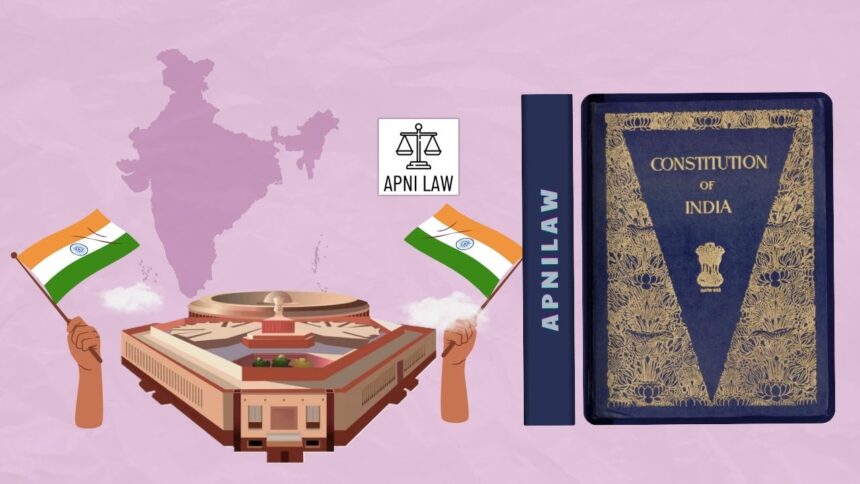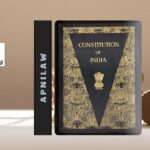Introduction
The media is often described as the fourth pillar of democracy, and nowhere is this truer than in India. In a vast, multilingual, and diverse nation, the media acts as the bridge between the state and the citizens. It informs, questions, and empowers people to hold those in power accountable. From newspapers that fueled India’s freedom struggle to the rise of 24-hour news channels and social media platforms, the media has evolved into a driving force behind political awareness and participation.
However, the power of the media comes with responsibility. Its ability to shape public opinion and influence politics means it must balance freedom with fairness. Understanding the role of media in Indian politics helps explain how democracy in India remains vibrant and participatory.
Historical Evolution of Media in Indian Politics
Media’s involvement in Indian politics began long before independence. Newspapers like The Hindu, Amrita Bazar Patrika, and Kesari were key tools of resistance against colonial rule. Leaders such as Mahatma Gandhi used publications like Young India and Harijan to inspire and unite people.
After independence, the media took on a new role, nation-building. It became a platform for political education, debate, and unity. The dark phase came during the Emergency (1975–77), when press freedom was severely restricted. That experience reinforced the idea that a free media is essential to democracy.
With economic liberalization in the 1990s, private television networks expanded rapidly. In the 2000s, the digital revolution transformed journalism again, bringing social media and online news into the political arena.
Media as the Watchdog of Democracy
The Indian media acts as a watchdog, ensuring transparency and accountability. Investigative journalism has exposed several political scandals, from the Bofors case to the 2G spectrum scam, forcing governments to answer to the public.
By questioning policies and exposing corruption, the media ensures that governance remains transparent. Political debates, press conferences, and interviews allow voters to assess leaders’ competence. In this way, the media keeps democracy alive and responsive.
Role of Media During Elections
Elections in India are massive democratic events, and the media plays a crucial role in shaping outcomes. It informs voters about candidates, party manifestos, and election promises. Through debates, interviews, and opinion polls, the media gives voters a basis for making informed decisions.
However, the emergence of paid news and biased reporting has raised serious concerns. Many media outlets, influenced by corporate and political interests, have blurred the line between journalism and propaganda. Despite these issues, media remains a powerful tool for voter education and awareness.
The rise of social media has further revolutionized elections. Platforms like X (formerly Twitter), Instagram, and YouTube allow politicians to connect directly with citizens. This democratization of communication has made political discourse more interactive, though it has also increased the spread of fake news.
Media as a Platform for Public Opinion
Media serves as the voice of the people. It shapes public opinion by framing issues and setting the political agenda. From the anti-corruption movement led by Anna Hazare to the Nirbhaya protests in 2012, media coverage turned local incidents into national conversations.
By amplifying the voices of ordinary citizens, media acts as a platform for democratic participation beyond the ballot box. It transforms individual grievances into collective movements, ensuring that public sentiment reaches policymakers.
Challenges Facing Indian Media
Despite its achievements, Indian media faces several challenges. Sensationalism has become common, as networks compete for higher viewership. Complex issues are often simplified into sound bites, while entertainment overshadows analysis.
Media ownership concentration is another problem. Large corporations often control multiple outlets, raising concerns about editorial independence. The growing trend of fake news and misinformation on digital platforms further threatens informed political debate.
Maintaining credibility in this environment requires journalists to prioritize truth, accuracy, and ethics over ratings and profits.
Media and Government Relations
The relationship between the government and media is both cooperative and adversarial. While Article 19(1)(a) guarantees freedom of speech and expression, governments sometimes impose restrictions in the name of national security or public order.
At times, the media faces pressure through censorship, defamation suits, or selective advertising bans. Yet, a free press remains the cornerstone of India’s democratic framework. The Press Council of India and News Broadcasting & Digital Standards Authority (NBDSA) are tasked with ensuring media accountability and ethical reporting.
Digital Media and Political Transformation
Digital media has changed how politics is practiced and perceived. It has made political engagement more immediate and participatory. Politicians now use social media to share announcements, respond to criticism, and build direct relationships with voters.
However, the unregulated nature of digital spaces also makes them vulnerable to misinformation, hate speech, and political manipulation. Despite these risks, digital platforms have made Indian politics more transparent and citizen-driven than ever before.
FAQs
1. How does the media influence Indian politics?
The media influences Indian politics by shaping public opinion, highlighting government actions, and creating accountability. Its coverage can determine which issues dominate national discussions.
2. What challenges does Indian media face today?
Major challenges include political interference, fake news, sensationalism, and corporate control, which threaten its objectivity and credibility.
3. What role does social media play in Indian elections?
Social media connects politicians directly with voters, making campaigns more personal and interactive. However, it also contributes to misinformation and polarization.
Conclusion
The media in India is not just a messenger, it is a mirror and a moulder of democracy. By informing, questioning, and empowering citizens, it strengthens democratic governance. Yet, with growing influence comes a greater need for responsibility and ethical reporting.
In a country as diverse as India, the media’s commitment to truth and fairness determines the health of democracy. As technology continues to evolve, responsible journalism and media literacy will remain essential in ensuring that power stays in the hands of the people.
For any specific query call at +91 – 8569843472








